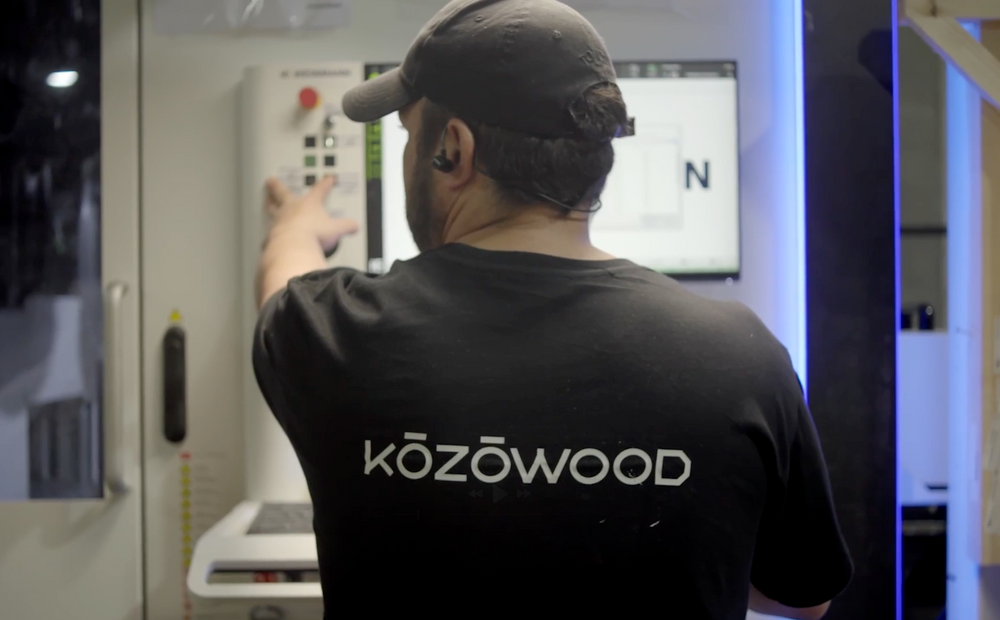(01)
Pillars of Sustainability
ESG: The Pillars of Sustainability in Timber Construction
The ESG framework represents an integrated approach that emphasizes the balance between three major areas—environmental, social, and governance. In timber construction, these pillars contribute to developing projects with positive impacts that address environmental challenges while creating value for communities and clients.
Environmental Pillar: Sustainability and Efficiency
The environmental pillar focuses on the impact that a company’s operations have on the planet, seeking ways to reduce emissions, use resources efficiently, and minimize waste. Timber construction emerges as a naturally sustainable solution. By choosing wood as the primary material, CO₂ emissions associated with construction can be significantly reduced, especially compared to more polluting materials like steel and concrete. Additionally, wood has a unique capacity: as it grows, it absorbs carbon from the atmosphere and continues to store it when used in buildings, contributing to a cleaner and more balanced cycle.
In practice, technologies such as Timber Frame and CLT (Cross-Laminated Timber) are revolutionizing the sector, helping construction move closer to the Net Zero goal—the balance between emissions produced and removed from the atmosphere. These methods not only reduce the construction sector's carbon footprint but also result in energy-efficient buildings, requiring less heating and cooling throughout their lifespan. This translates into lower energy consumption and, naturally, greater respect for the environment. It’s a way to build that combines innovation, efficiency, and care for the planet.
Social Pillar: Positive Impact on Communities
The social pillar puts people and communities at the heart of a company’s operations, promoting initiatives that prioritize well-being, safety, and the creation of real economic opportunities. In timber construction, this social impact is evident in the commitment to local and ethical suppliers and the generation of jobs for workers in the communities involved. This model not only strengthens local economies but also contributes to sustainable development by investing in the training and skill development of the workforce.
The lightweight nature of timber offers benefits beyond the material itself: it allows for quicker and safer assembly, reducing on-site construction time and minimizing direct impacts on the community. Compared to other materials, timber construction requires less invasive processes, meaning less noise, fewer disruptions, and greater tranquility for nearby residents and workers. In addition to being more efficient, it is a way of building that respects people and places, showing that progress and quality of life can go hand in hand.
Governance Pillar: Transparency and Commitment to Quality
The governance pillar ensures that companies adhere to ethical and transparent practices, fostering trust-based relationships with clients, partners, and suppliers. In timber construction, governance is essential to ensure that quality standards are met, including the adoption of techniques and materials that guarantee fire and seismic resistance, as well as ensuring that each project is carried out with the utmost responsibility.
For construction companies, governance involves everything from the selection of materials and suppliers to monitoring each stage of a project, ensuring compliance with regulations and agreements established with clients. This commitment to quality and ethics is crucial to ensure that timber constructions are durable, safe, and aligned with client expectations, sustainability standards, and advanced structural safety protocols.
(02)
Benefits of ESG
Benefits of Applying ESG in Timber Construction
Adopting ESG practices in timber construction not only meets current sustainability expectations but also offers multiple benefits:
1) Reduction of Carbon Footprint: Unlike concrete and steel, timber stores carbon throughout its lifecycle, directly contributing to the reduction of CO₂ emissions and helping construction align with the Net Zero concept.
2) Energy Efficiency: The thermal properties of timber help keep buildings more comfortable, reducing the need for heating in winter and cooling in summer. This energy efficiency lowers operational costs and energy consumption.
3) Safe and Fast Assembly: Timber structures are lighter and easier to handle, facilitating transport and assembly. This characteristic reduces construction time and enhances workplace safety, especially in urban or sensitive areas.
4) Development of Local Communities: Timber construction prioritizes local suppliers and partners, strengthening regional economies and promoting sustainable growth. This business model supports job creation and workforce training, positively impacting the communities involved.
5) Well-Being and Quality of Life: Timber buildings provide a warm and healthy indoor environment, with proven benefits for occupants' well-being. Natural wood helps reduce stress and improves air quality, making it a choice that promotes health and comfort for users.
6) Transparency and Customer Trust: The governance pillar ensures transparency at every stage of the project, strengthening trust with customers. Companies that apply ESG principles commit to quality, ethics, and responsibility, building a solid and credible reputation in the market.
(03)
Sustainable Future
ESG and the Future of Sustainable Timber Construction
The future of sustainable construction is increasingly tied to the adoption of practices that respect both the environment and society. In the case of timber construction, implementing ESG principles represents a profound shift in how buildings are conceived, designed, and constructed. As demand for timber buildings and more sustainable housing options grows, so does interest in certifications that ensure the responsible sourcing of wood, such as FSC and PEFC. These certifications are not just labels but a real commitment to ecosystem preservation and the conscious management of natural resources, ensuring that the wood used comes from forests managed ethically and sustainably.
For companies like Kozowood, integrating ESG practices into timber construction is not just a strategic vision but also a clear purpose. The company uses FSC and PEFC-certified wood in its projects, ensuring traceable and sustainable materials. This results in a reduced environmental footprint and a significant contribution to goals like Net Zero. However, it’s not just about materials or numbers: by embracing ESG as part of its core values, Kozowood strengthens its connection with nature, communities, and clients, demonstrating that it is possible to build responsibly while respecting both natural resources and people.
The commitment to ESG in timber construction is not just a trend but a necessity to ensure that future generations can live in timber homes that respect the planet and provide healthy environments. This type of construction, which is gaining increasing popularity and community support, offers solutions that combine environmental respect with improved quality of life. Building with timber, supported by ESG practices, is becoming one of the best options for those seeking a sustainable, beautiful, and functional home, contributing to a future where the construction sector effectively addresses environmental and social challenges.
(04)
F.A.Q. - Frequently Asked Questions?
What is a reduced environmental footprint in timber construction?
A reduced environmental footprint in timber construction refers to the lower environmental impact compared to traditional materials like concrete or steel. Timber, as a renewable resource that sequesters and stores carbon throughout its lifecycle, helps to reduce CO₂ emissions. Additionally, the use of certified wood and modern methods such as Wood Frame / Timber Frame and CLT minimizes waste, promotes the responsible use of natural resources, and makes the construction process more efficient and sustainable at every stage.
What are invasive construction methods?
Invasive construction methods are techniques that significantly impact the local environment, causing high levels of noise, dust, vibrations, and prolonged construction periods. These methods often require heavy machinery and processes that disrupt the daily lives of nearby communities. In contrast, timber construction drastically reduces these impacts due to the material's lightweight nature, which simplifies transportation and assembly. Additionally, the use of prefabricated components enables faster, quieter, and less intrusive building processes.
What is traceability in certified timber?
Traceability in certified timber refers to the ability to identify and monitor the origin of the wood throughout the entire supply chain, from its extraction in the forest to its final use in construction projects. This process ensures that the timber comes from responsibly managed forests, certified by entities such as FSC (Forest Stewardship Council) or PEFC (Programme for the Endorsement of Forest Certification). Traceability is essential for ensuring ethical and sustainable practices, fostering consumer trust, and reinforcing companies' commitment to environmental protection.




